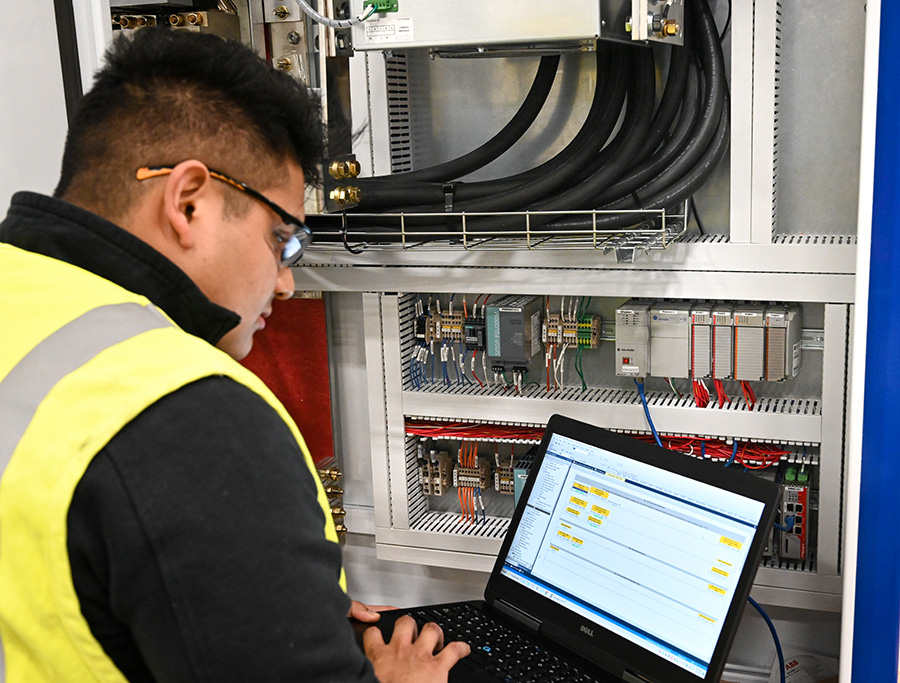What is the Difference Between Standard and Safety PLCs?
July 5, 2022

Waiting for an accident to happen is no way to operate. Manufacturers around the world invest a considerable amount of resources into making the workplace safer for their crews while also protecting their equipment and products. Safety programmable logic controllers (PLCs) are a step in the right direction in terms of safety, yet some are hesitant to make the leap. While they may not be the perfect product for every situation, there are many reasons why they are the right choice for control systems in many environments.
Understanding the Difference Between Standard and Safety PLCs
While all PLCs are designed to automate machine processes, functions, and production lines, safety functions have typically been developed independently. Safety PLCs can provide both of those functions in one device. Industrial machine safety is always a high priority, and these devices can make safety protocols better and easier to implement.
Ultimately, a safety PLC is designed not to fail. However, a zero rate of failure is never possible. When a failure is imminent, a safety PLC will fail in a way that is protective and predictable. Built-in diagnostics allow the safety PLC to continually monitor inputs and outputs. If a fault or failure is detected, the PLC will initiate a safe shutdown to avoid harm being caused to people or processes in the organization.
Advantages of Choosing a Safety PLC
Along with the ability to automate safety controls, the primary advantage of a safety PLC compared to a standard PLC is its ability to also perform standard controls. A standard PLC can only perform standard controls. Here are several more reasons why safety PLCs can be the right decision for your operations:
- Time and money can be saved on field wiring as there is no need for safety relays.
- Safety systems designed around safety PLCs are more flexible as modifications require only programming changes without any additional wiring changes or additional relays.
- A reduced time for development, installation, startup, and support.
- Robust diagnostics and information tracking capabilities that are easily integrated with other systems.
- Once installed, tested, and validated, the programming in the safety PLC can be locked and password-protected to prevent unauthorized access and changes.
- Some models support integrated motion via Ethernet, allowing them to initiate safe torque-off functions on a variety of VFDs.
The primary drawback of safety PLCs is the higher upfront cost. For smaller operations or applications that are relatively simple, implementing this new technology may not deliver enough return on the investment to justify the additional expense. Another concern whenever implementing new technology is the familiarity of engineers and maintenance technicians. In order for safety PLCs to be used correctly, you may wish to hire a machine safety consultant to provide additional training and education required for current workers.
Can You Trust a Safety PLC?
In a word, yes. All safety PLCs must be verified by an independent third-party and meet international standards such as IEC 61508. These standards are designed to ensure that the required safety integrity level (SIL) or Performance Level (PL) is provided by systems designed and implemented to do so.
While a zero-risk situation is never possible, any intolerable risks must be reduced to a level as low as possible. To achieve this, a safety PLC must meet a SIL of 3 and detect greater than 99 percent of all potential failures. To prevent redundant failures, they must be made with silicon from different lots.
The testing process includes determining the device’s diagnostic coverage by data verification and program flow control tests. These tests are used to ensure the PLC is storing critical data and that its internal functions are executed in the correct order. Lastly, safety PLCs must undergo software-fault injection testing. This scenario downloads corrupted programs to the device to ensure that it responds in a safe and predictable manner.
Minimizing Risks
Safety PLCs are a relatively new technology, and tried-and-trusted ways are hard to move away from. Still, safety PLCs are already being used in industries around the world that require a high level of safety, including oil and gas, marine, petrochemical, power plants, and more. The strict certification process ensures that reliability is maximized while risks are minimized.
Safety PLC systems should be considered safe and an effective way to design a safety system that is easier and less complex than those with standard PLCs. To ensure the safest environment for your crew and your equipment, be sure to include a third-party equipment and machine safety consulting company. Choose a partner that has experience with safety PLCs, and understands regulations such as those provided by OSHA to ensure proper implementation.






